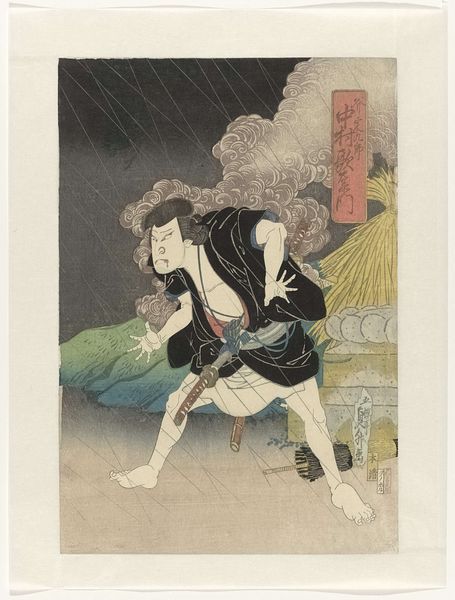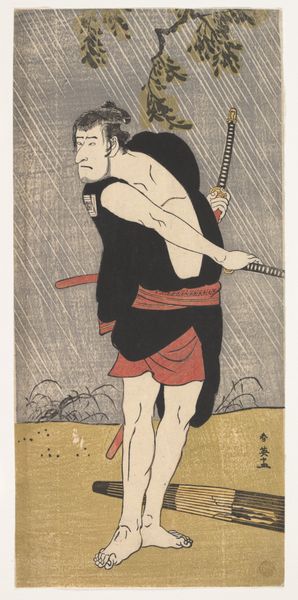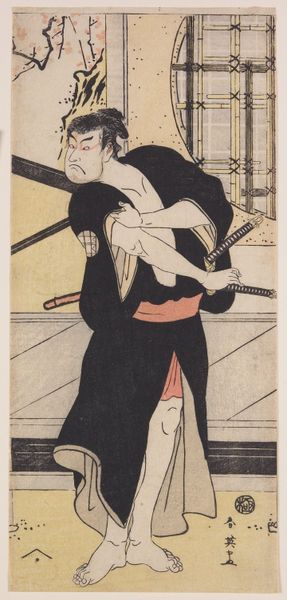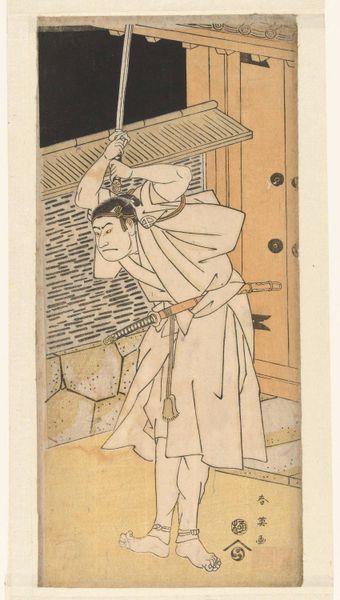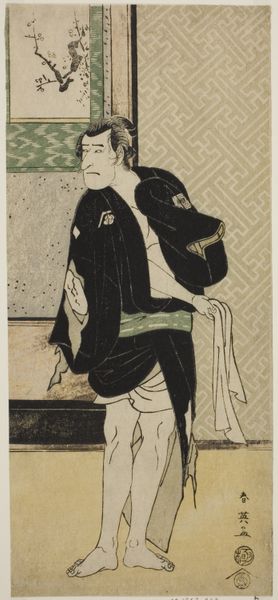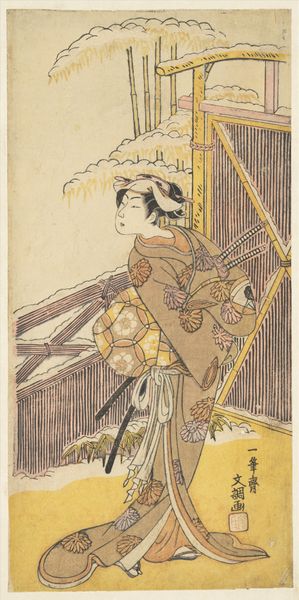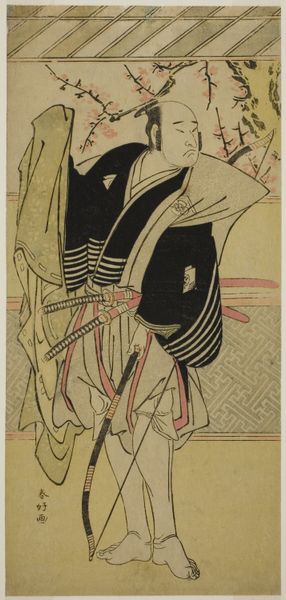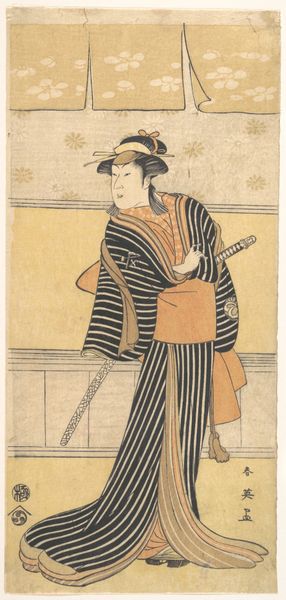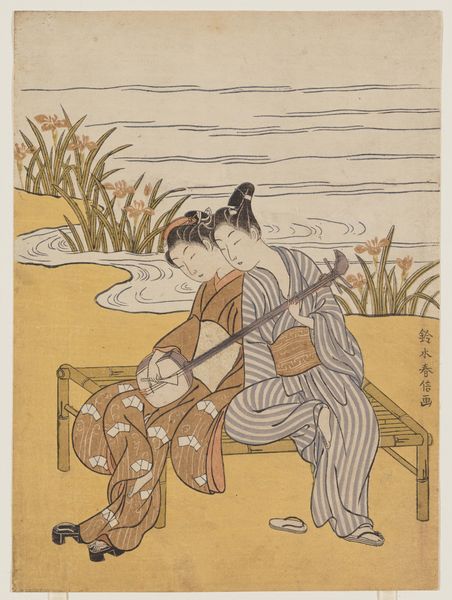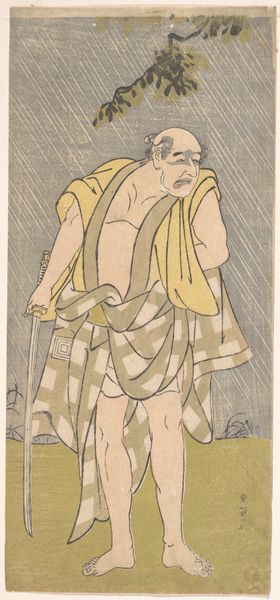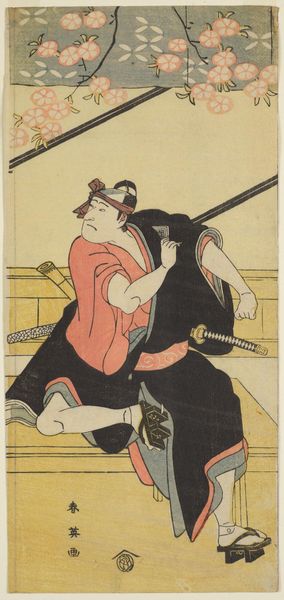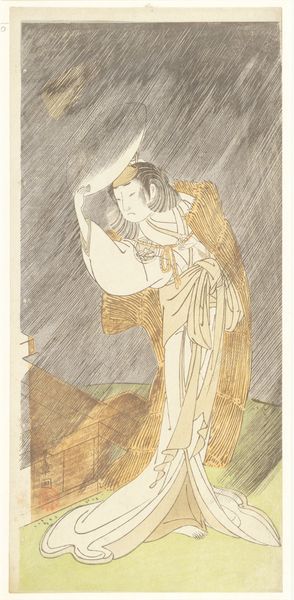
Acteur Ichikawa Danjuro, waarschijnlijk als de rover Sadakuro in het stuk over de 47 Ronin. Hosoe 1790
0:00
0:00
print, woodblock-print
#
portrait
# print
#
caricature
#
asian-art
#
caricature
#
ukiyo-e
#
woodblock-print
Dimensions: height 319 mm, width 139 mm
Copyright: Rijks Museum: Open Domain
Curator: This woodblock print by Utagawa Toyomaru, created around 1790, depicts actor Ichikawa Danjuro, probably in the role of Sadakuro, a robber from the tale of the 47 Ronin. It’s held here at the Rijksmuseum. Editor: The first thing I notice is its rather subdued color palette and flattened perspective; it has such a tactile, almost coarse feeling about it, a really grounding sensation despite the theatrics it promises. Curator: Precisely. Utagawa was working within the ukiyo-e tradition, often focusing on portraits of Kabuki actors. In Japanese culture, actors often became archetypes. We can unpack the meaning of costuming, pose, expression, and relate those semiotic indicators back to the play's wider thematic concerns. This print certainly carries layers of performative identity, doesn't it? Editor: I agree completely! The emphasis seems placed squarely on process: a carving tool moving through wood, leaving raised areas which accept the pigments; the repetitive, rhythmic nature involved with making many impressions from a single block! Knowing it’s part of ukiyo-e only reinforces that feeling, where prints had very tangible implications concerning how they spread imagery across vast networks of consumers. Curator: Exactly. Consider his stance—sloping under the weight—a suggestion of hidden intentions; we also cannot overlook Sadakuro’s status as a rogue. This composition uses shadow and symbol to highlight the complex, perhaps contradictory aspects of moral authority. Editor: It's interesting to think of this print being both about craft and conveying layers of meaning about social performance. Given these works were also widely disseminated consumer items adds even further to that. It highlights that tension inherent to both its status as an object and its symbolic richness. Curator: Indeed. When viewed as both a crafted object and a piece loaded with symbolic meaning, this artwork offers a glimpse into the intertwined realms of artistic production and its cultural significance in Japan. Editor: Seeing art as bound so completely to its own method makes one look anew at what we celebrate about artists! Thanks to Utagawa and processes made available via mass dissemination, we’ve been made privy today and long ago on insights into popular tastes.
Comments
No comments
Be the first to comment and join the conversation on the ultimate creative platform.
